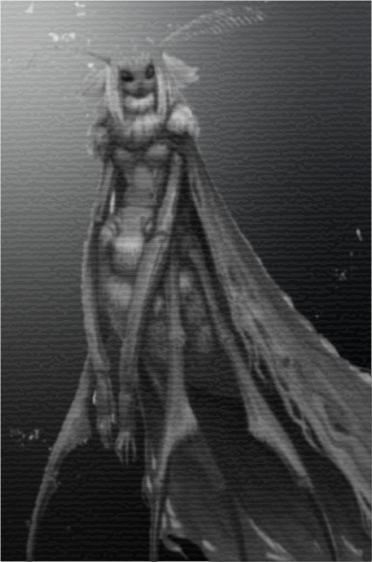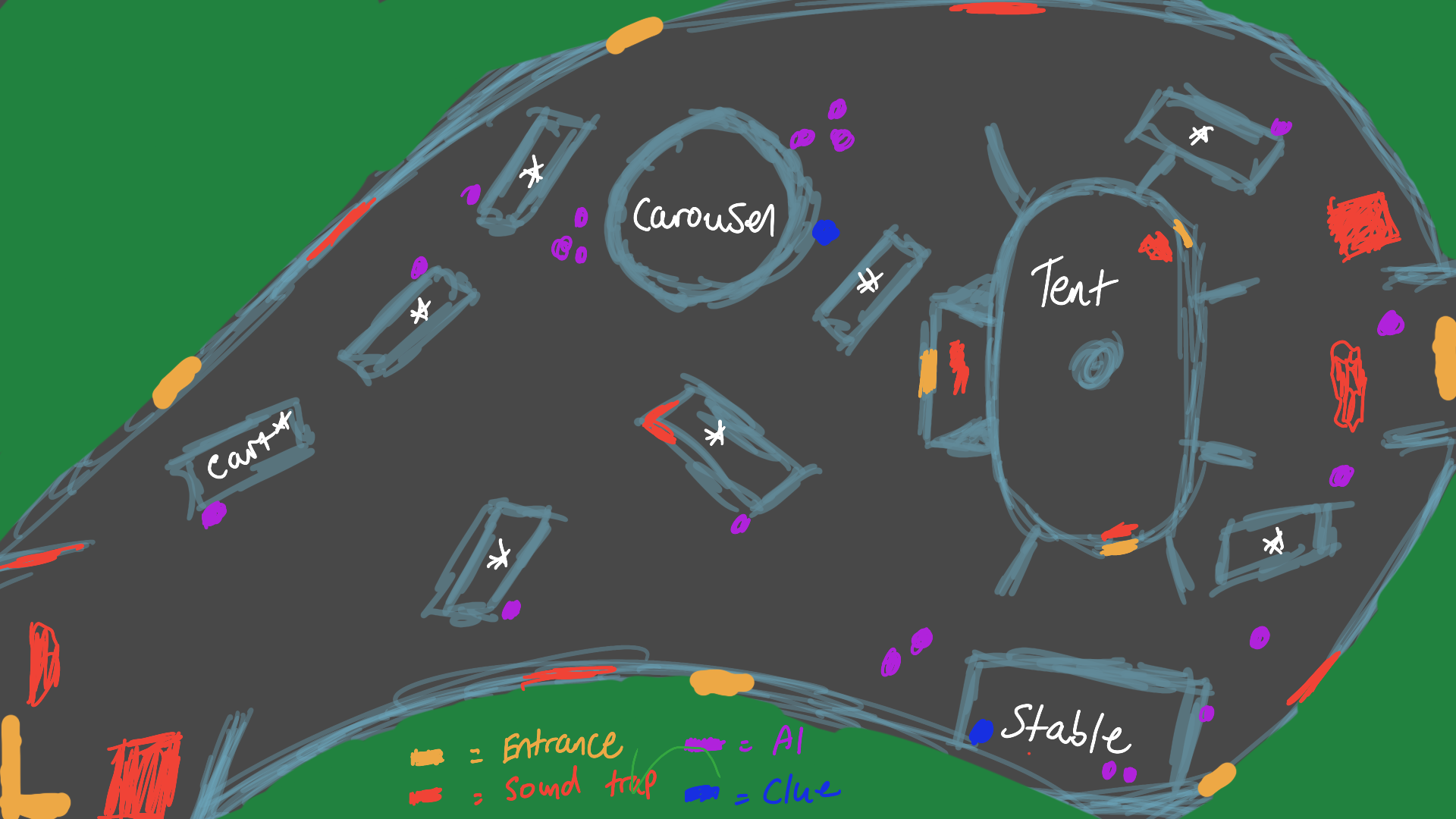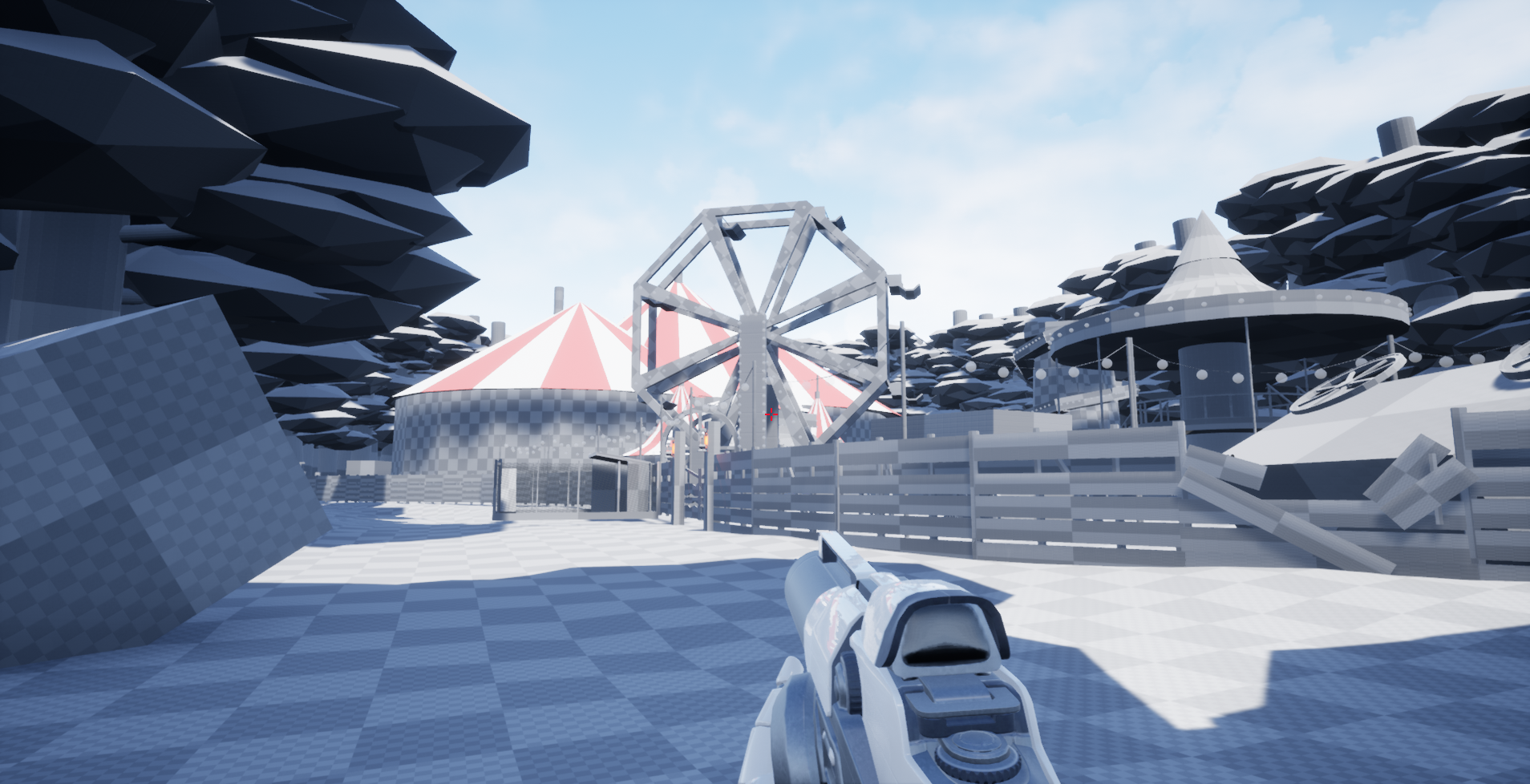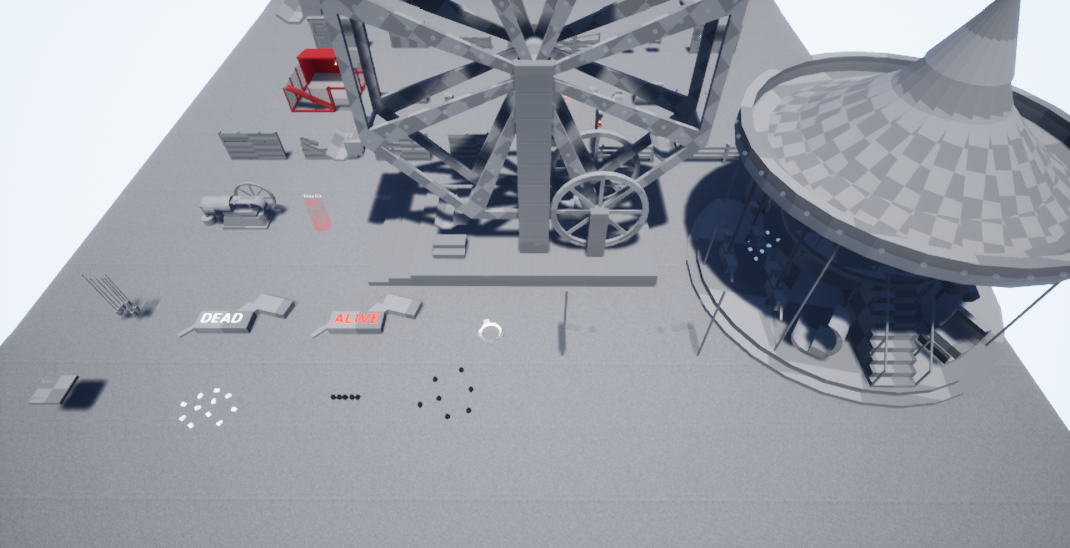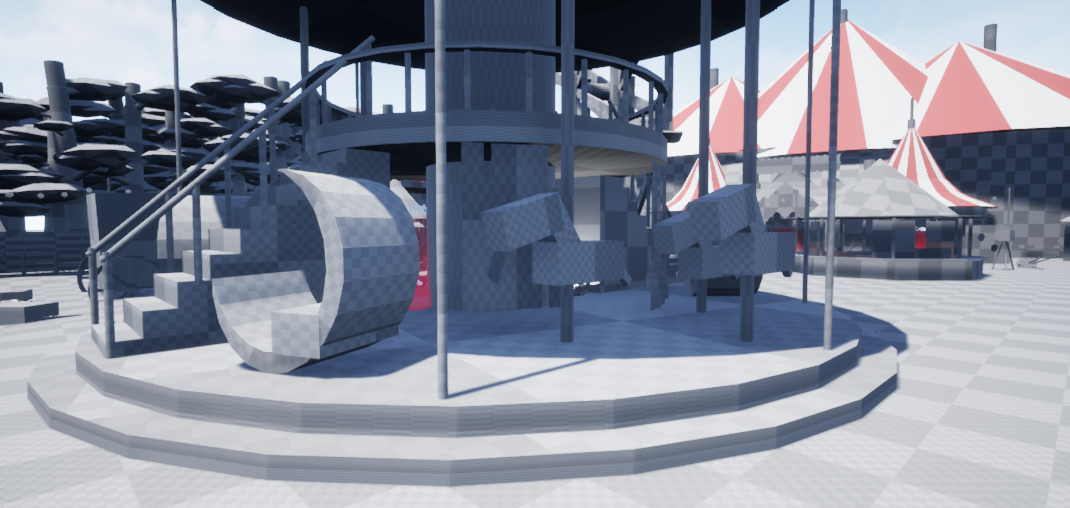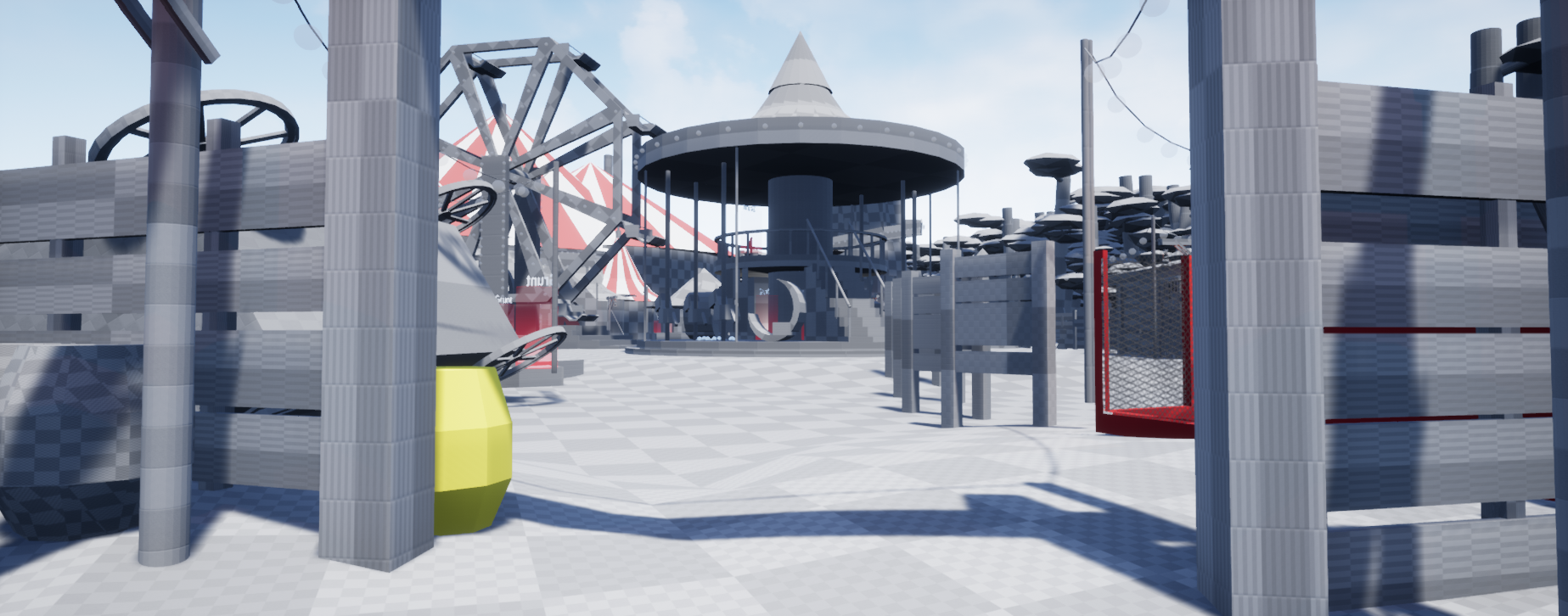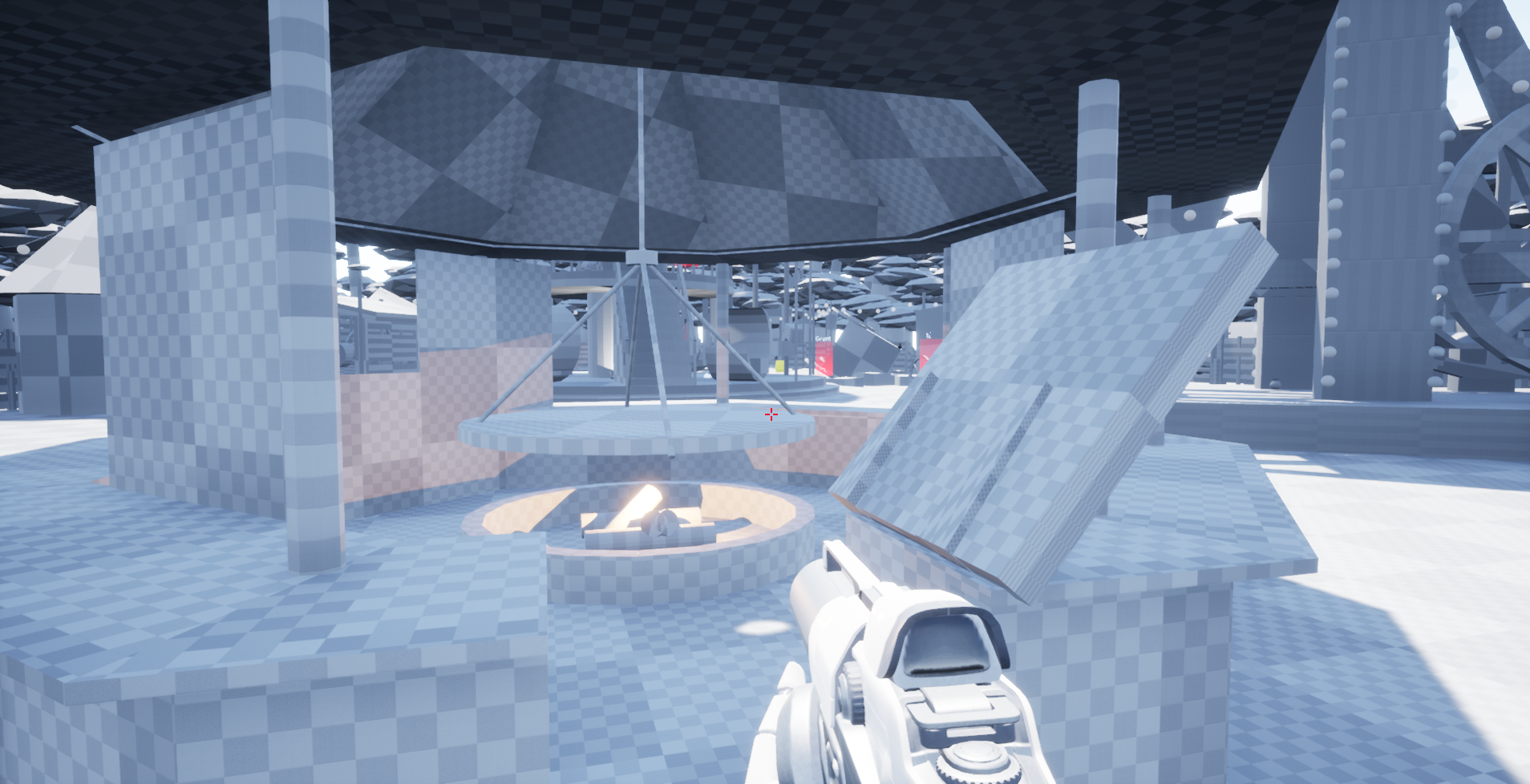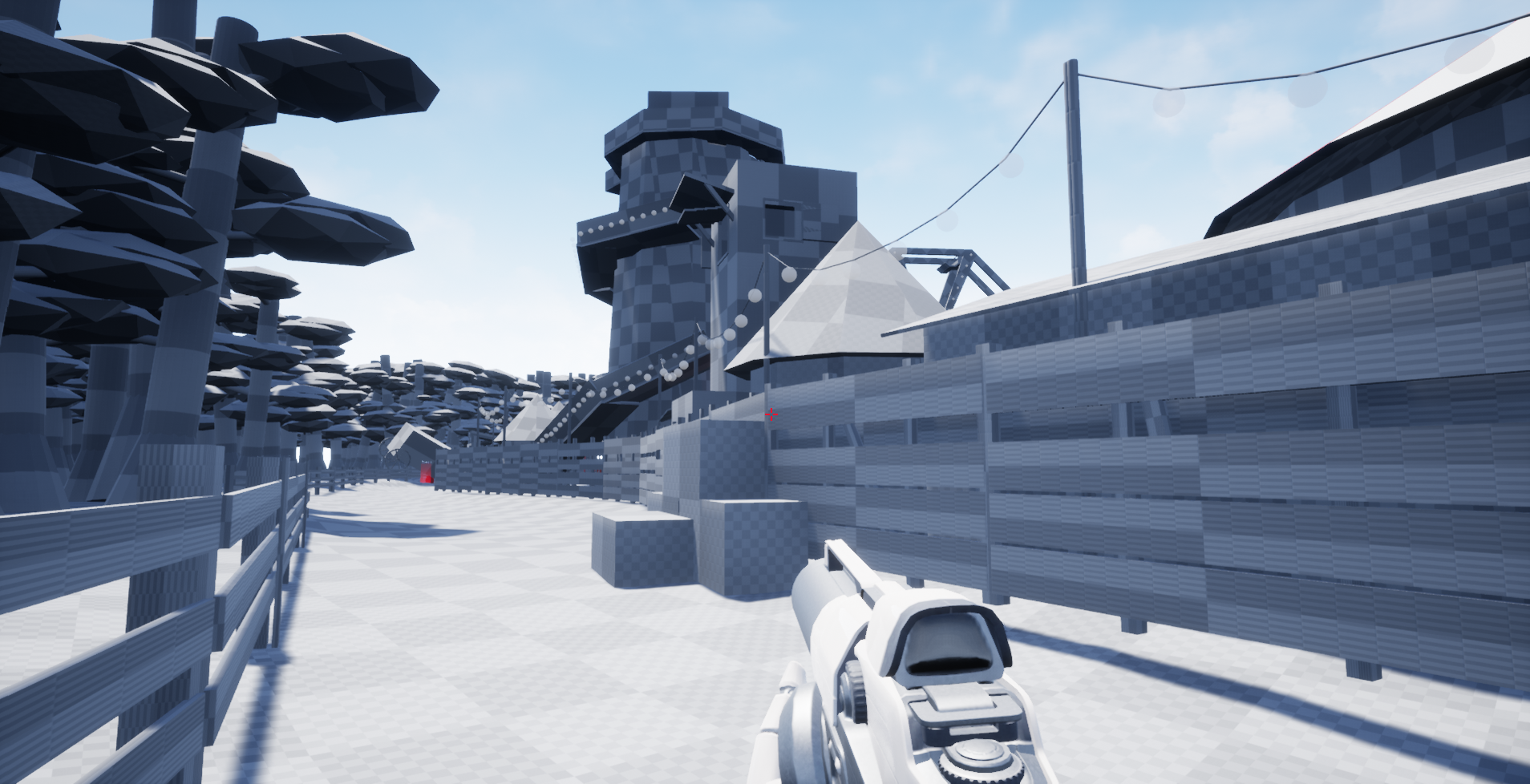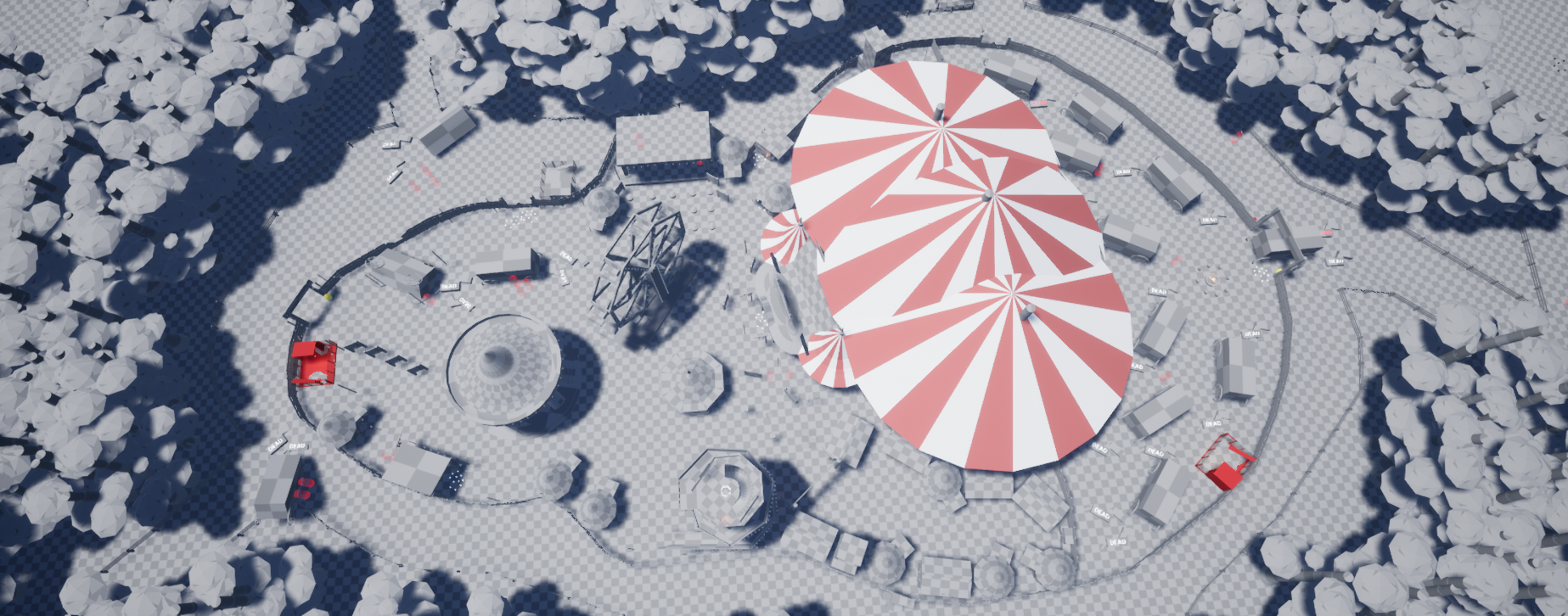
Hunt: Showdown
Boss & Level Design
My goal for this project was to design a Compound for Hunt: Showdown by learning and understanding the techniques Crytek used to develop their world. The final piece should look like it could easily fit into the game.
Built in Unreal Engine 4.
Process…
Solo Project | Unreal Engine 4 | Procreate
Step 1 | Game Breakdown
Using insights from the official Hunt: Showdown YouTube channel and my own personal breakdowns of two existing compounds, I created a comprehensive portfolio of the world rules. These included lamp placements, how the developers approached exiting buildings (is there cover?) and additional placements such as barrels and ammo.
Step 2 | Moodboard
Next up I needed to come up with my concept. As a big fan of theme parks and doing some research into 1895 when the game is set, I settled on a circus / funfair. Obviously they looked a bit different back then therefore getting the correct mood was key. They tended to be cluttered with tight walkways as they attempted to cram as much in as possible. Every compound needs at least one building to house the boss and therefore a circus tent seemed like a fun choice.
Step 3 | Boss Design
Each boss tends to have a compound that is particularly attached to them, for example The Butcher has The Slaughterhouse. For that reason I wanted to introduce the new map (that this compound would presumably be apart of) with a new boss and tie the whole addition together. As part of the design I broke down the existing boss mechanics and introduced new mechanics which feel unique. In this case, the moth boss interacts with the passive lanterns around the compound which players could turn off to make the fight easier.
Step 4 | Compound Sketches
My go to app of choice is Procreate as I can easily send it to myself on the PC. Several designs were drawn out and the very basic shape was created in Unreal to check sightlines from the player view. These two things couples together lead me to the final design. Important additions were enemy placements, sound traps and where the clues could be placed.
Step 5 | Blueprints & Modular Assets
I wanted to match the greybox as close the game as possible therefore using the game as reference I copied the various fence and door designs. These behave differently and are used in different cases. For example main entrances tend to be large sliding doors whereas back entrances will use a simple single door. The various fence designs have different line of sight angles therefore I wanted to match it as best as possible. By making them early I had the most flexibility to create various buildings and sped up the process overall.
Additional blueprints created include: interactable objects such as health, ammo and lanterns, sound traps such as birds, horses, dog kennel and glass, a generator, music devices such as Piano and Gramophone. The larger set pieces (Ferris Wheel and Carousel) turn on when the generator has been activated.
Step 6 | Compound Greyboxing
Greyboxing was done using the Unreal geometry tool with the main goal focusing on sightlines for a first person shooter. The Hunt: Showdown gameplay focuses on moving from cover to cover in gunfights and therefore players need as many options as possible to move around the compound. Insight from the developers state that players avoid open areas therefore there needed to be a careful balancing act where the compound didn’t feel too dangerous to explore however not completely safe from attackers.
Step 7 | Enemy Placements
As important as PvP is, player versus enemy makes up the majority of gameplay. These are especially apparent within compounds. Hives tend to be up high to get the best sightlines on players, Immolators and Meatheads protect main entrances to compounds, Regular and Armoured grants protect clues. Finally Hellhounds stand in packs on roads to dissuade players from walking the quickest routes. After that Grunts tend to be placed in points of interests in various places such as leaning against trees.
Step 8 | Iteration
As with anything, the design needed to be iterated on several times to include more cover and sound traps. In important aspect I never considered in my original design was using different types of materials around the compound which could create different sounds when the player walked on them. This helps defending players track attackers by placing them in specific locations. For example if they hear a wooden footstep noise they could assume a player has entered via the wooden stage.
Hunt: Showdown - Design Deck
Full project portfolio can be found here:
https://docs.google.com/presentation/d/1N7NMX4qSmh_Qm4zpUeYca1CQeWaxW-KNZxPCoy52Ub0/edit?usp=sharing

